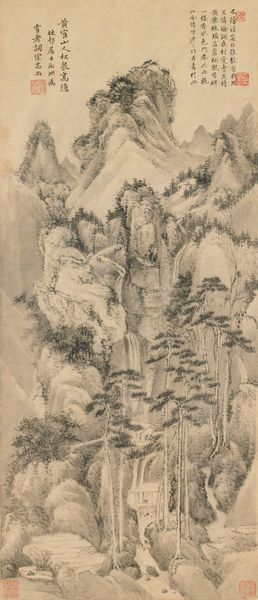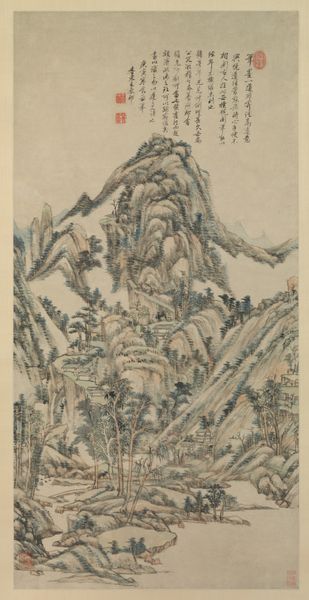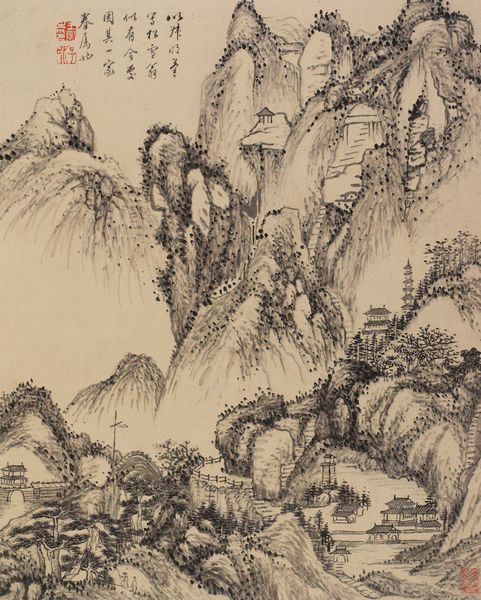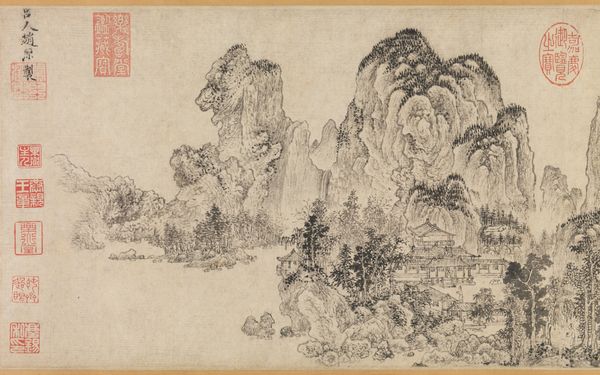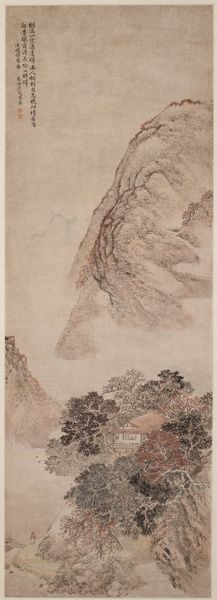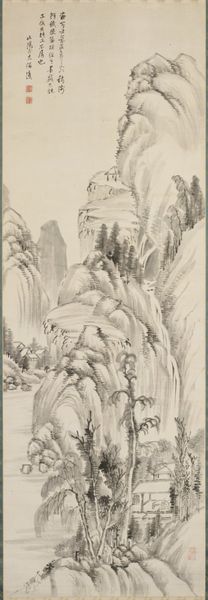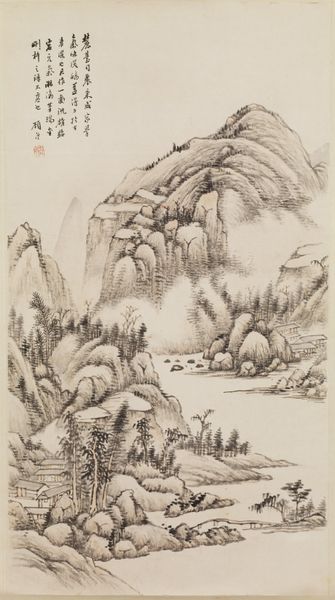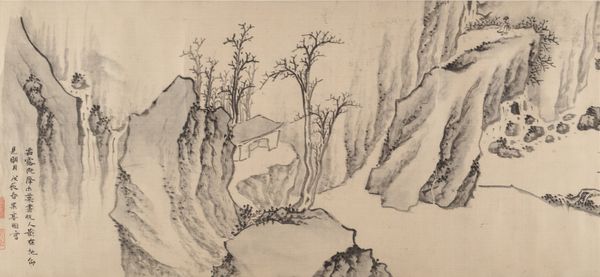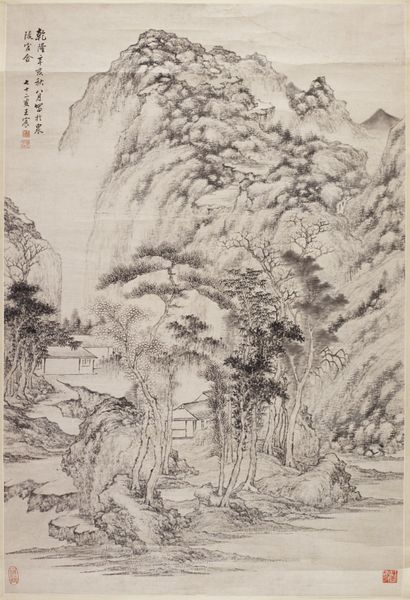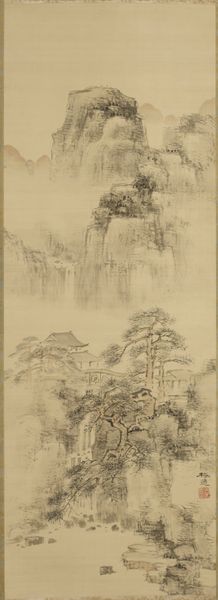
Landscape in the Style of Taiga late 18th - early 19th century
0:00
0:00
drawing, paper, ink
#
drawing
#
pencil sketch
#
asian-art
#
landscape
#
charcoal drawing
#
japan
#
paper
#
ink
#
pencil drawing
#
orientalism
Dimensions: 51 13/16 × 11 7/16 in. (131.6 × 29.05 cm) (image)71 3/16 × 16 9/16 in. (180.82 × 42.07 cm) (mount, without roller)
Copyright: Public Domain
Editor: This is "Landscape in the Style of Taiga," a late 18th to early 19th-century ink and paper drawing by Nagamachi Chikuseki, housed here at the Minneapolis Institute of Art. There’s a real sense of depth and quiet contemplation in this monochrome landscape. What can you tell me about this piece, seeing it through a wider cultural lens? Curator: It is interesting to view such artwork as sites where social values are subtly negotiated. Think of the emphasis on nature, for instance. What is omitted? Are the lives of marginalized people apparent in this 'landscape'? Is the ‘nature’ portrayed even accessible to all segments of society or does it predominantly portray the experiences of privileged individuals and perhaps reflect a kind of utopian escapism? Editor: That's a very interesting way to view it. So you're suggesting the seemingly objective landscape might actually carry certain social biases or reflect the artist's positionality? Curator: Precisely! These landscapes weren't simply neutral depictions of nature. They embodied particular philosophies influenced by specific socio-political structures, power dynamics, and spiritual values of their time. Editor: It’s almost as if this idealized, serene landscape serves as a kind of commentary, intended or otherwise, on the social realities it exists alongside. How can we then view such artwork, made by artists who were potentially divorced from any immediate politics? Curator: The challenge is always to read what isn’t directly said. Can we view artmaking as something that is always connected to other social identities: of class, race, and gender. The artist isn't an isolated genius; rather, they exist in and contribute to particular social and cultural networks. Editor: I hadn't considered the painting in that light. It offers a new layer of appreciation to think about art beyond just aesthetics. Curator: Exactly, and it challenges us to question the narratives art presents and to recognize whose stories are being told – and whose are being left out.
Comments
No comments
Be the first to comment and join the conversation on the ultimate creative platform.
